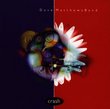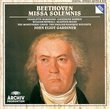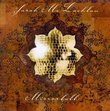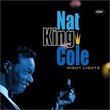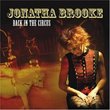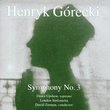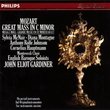| All Artists: George Frederick Handel, Domenico Scarlatti, Murray Perahia Title: Handel/Scarlatti: Murray Perahia Plays Handel & Scarlatti Members Wishing: 0 Total Copies: 0 Label: Sony Release Date: 3/4/1997 Genre: Classical Styles: Chamber Music, Forms & Genres, Sonatas, Suites, Historical Periods, Baroque (c.1600-1750), Classical (c.1770-1830) Number of Discs: 1 SwapaCD Credits: 1 UPC: 074646278529 |
Search - George Frederick Handel, Domenico Scarlatti, Murray Perahia :: Handel/Scarlatti: Murray Perahia Plays Handel & Scarlatti
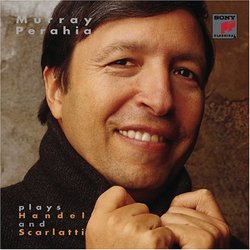 | George Frederick Handel, Domenico Scarlatti, Murray Perahia Handel/Scarlatti: Murray Perahia Plays Handel & Scarlatti Genre: Classical
No Description Available No Track Information Available Media Type: CD Artist: PERAHIA,MURRAY Title: PLAYS HANDEL/SCARLATTI Street Release Date: 03/04/1997 |
Larger Image |
CD DetailsSynopsis
Product Description No Description Available No Track Information Available Media Type: CD Artist: PERAHIA,MURRAY Title: PLAYS HANDEL/SCARLATTI Street Release Date: 03/04/1997 Similarly Requested CDs
|
CD ReviewsA welcome change. Paul Geffen | 02/11/1999 (4 out of 5 stars) "With this excellent release, Murray Perahia extends his recorded repertoire into the Baroque, exhibiting his usual thoughtfulness and sensitivity.These are all more or less familiar works by now, having been recorded by the likes of Richter, Gould, Jarrett, Gilbert, and others. The Handel Suites have perhaps not quite the sophistication of the French and English Suites of J. S. Bach, but these charming essays are certainly worthy of repeated attention and do allow a wide range of interpretations.Perahia has a cultivated and elegant tone, and generally takes a relaxed approach to the material, with an occasional tendency to rush at the codas. His interpretations emphasise the melodic over the rhythmic, and his fine technique seems at times to make the rough places smooth. Richter has a very different view of these pieces and brings out a rough and craggy side of these works which is not hinted at here.The second half of the program consists of seven sonatas by Scarlatti. It begins with one of the best known of the 550 or so in Kirkpatrick's catalog. Kk. 491 is nicely played, with a good sense of the contrasts and lines.A less familiar minor-key sonata, Kk. 27, is for me the high point of the recital. It is played with a lovely legato, subtle shading and measured dynamics. Perahia uses decrescendo to great effect here. The harmonic complexity of this piece seems to foreshadow Beethoven. This is one of the most subtle and interesting of Scarlatti's works.Kk. 29 is given a very lively reading, even a little rushed, and could be presented with more contrast between the sections. In Kk. 206, Perahia employs a gentle, singing tone to good effect.The intelligent sequence in which these sonatas are presented enhances the pleasure of listening. Overall this is a brilliant and very enjoyable foray into the Baroque from one of the masters. Highly recommended." Think 19th & 20th Century Performance Practice! Craig Matteson | Ann Arbor, MI | 07/06/2002 (5 out of 5 stars) "I went to music school in the late seventies to the mid-eighties during the height of the authentic interpretation movement. I believe that our musical culture is much better because of the experiments and study of this movement. I participated in an early music ensemble while attending music school and we performed a lot of interesting music always thinking about how it might have been done when it was first written. However, I was also trained on the piano by a man whose teacher was a pupil of Liszt. I kept asking folks that if we wanted authentic performance practice the question should be whose performance practice. Isn't there a late nineteenth century performance practice? Of course, nowadays the early music people are indeed looking anew at the Romantic performance practices. And we are the better for it. Here we have Handel and Scarlatti on the piano. And yes they sound wonderful when played well on the harpsichord, clavichord, virginal, and EVEN the piano. It is true that our present pianos sound nothing like the early pianos (which were made to sound a lot like harpsichords in any event). But this music does stand up to interpretations on the modern piano. Here we have first rate playing and first-rate interpretation and excellent recording techniques (if just a tad wet for my taste). I don't want to give up hearing this music in any medium. I want to hear it on harpsichord AND on the piano AND on the clavichord AND on anything else a first rate musician wants to play it on. That is the key for me. Who's playing it? I have to confess a weakness for ground basses and chaconne forms. Heck, I like the variation form - especially to play. The performance of the Chaconne in G Major here is quite wonderful. It caused me to dig out the music and have fun with it on my own piano. It is really fun to make the big octaves boom with those big chords. Kind of like an organ (another keyboard instrument that would work for the Chaconne). The Scarlatti on this disk will make you want to get your music off the shelf and work on them so you can play the music more like Perahia. He has wonderful tone and fluidity. But he also has humor and wit - something so many virtuosi lack. Remember, this is fun music above all! This is Spanish court music (written by an Italian) and shouldn't ever be brooding or angst ridden. Perahia understands this. Listening to this can be a rib tickling (as well as an ivory tickling) experience. Bravo!" If I could give it 6 stars I would surferblue | Singapore | 12/06/2003 (5 out of 5 stars) "After spending about two weeks scouring for this CD, i finally managed to grab the only copy available from my local Tower Records store before deciding to order from Amazon.com as a last resort. I took this for a listen one night to perhaps have a little light soothing music before going to sleep, and it turned out that this CD kept me awake all night long.In the opening Prelude (track 1) of Handel's Suite No. 5, the left hand comes in with just an ordinary single melodic line, but it is when the right hand comes in that the magic and enchantment begins, with the Allemande (track 2), Courante (track 3) and Air (track 4) following shortly. And it is at this point where I was captivated by not only Murray Perahia's playing but the shape and flow of the music. I knew that more was to come, and indeed, the Chaconne in G (track 5) blew me away totally, with breathtaking lyricism, beautiful contrapuntal weavings, flawless technique, controlled structural balance and startling virtuosity. All i could do was stare at my stereo while the CD spins and worship the sublimity of sound that was emanating from the speakers. This is baroque as I have never heard before. By the end of the 8-minute Chaconne I found myself at a total loss for words. And this is only the 5th track out of 22. I'm finding it hard to describe in words the section with the bass octaves and running right-hand passages. Just take a listen to it and you'll see what I mean. I'll be searching for the Chaconne score the moment I have free time to spare. Needless to say the following tracks are equally brilliant. Unforgettable are the Air from Suite No. 3 (track 10) and Allegro from Suite No. 2 (track 13), my personal favourites alongside the Chaconne. Perahia gives us a treat from Scarlatti in the second half of the programme, featuring 7 of the probably less known sonatas. I have played a selected few of Scarlatti's sonatas not in this CD and have enjoyed them, but with Perahia's playing of these Sonatas, particularly K27 (track 17), I feel compelled to dig out my Scarlatti Sonata score and start playing it, to indulge myself further in the characteristic excellence of Scarlatti. What else can I say? After a 1st listening of this CD i immediately replayed it again, trying to make myself believe that such music ever existed and is played by one of the most accomplished pianists of our time. I am currently attempting one of J.S.Bach's Partitas, and I believe that if I could ever attain perhaps a fifth of Perahia's fluidity and lyricism palpably expressed in the Chaconne and incorporate it into the Partita, I would be greatly contented.This is a disc that should never be missed. Take my word for it. A CD that is truly a treasure. And a big BRAVO to Murray Perahia, who already astounded me the first time he came to my country for a one night performance of Beethoven/Schubert repertoire."
|

 Track Listings (21) - Disc #1
Track Listings (21) - Disc #1